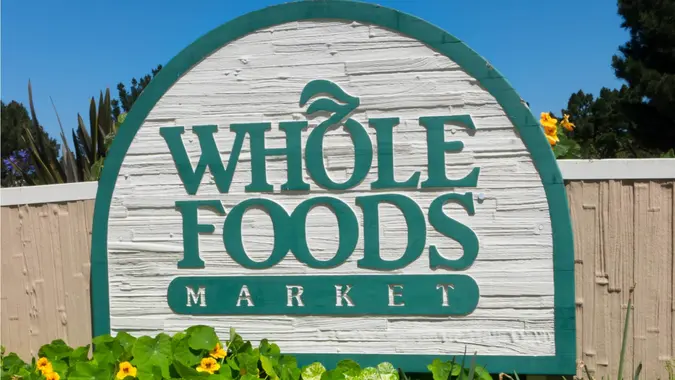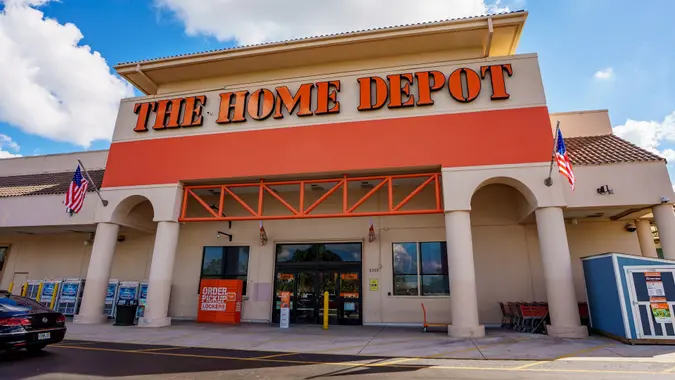Average Groceries Costs from 2020 to 2023 – Are They Really That Much More Expensive?

Commitment to Our Readers
GOBankingRates' editorial team is committed to bringing you unbiased reviews and information. We use data-driven methodologies to evaluate financial products and services - our reviews and ratings are not influenced by advertisers. You can read more about our editorial guidelines and our products and services review methodology.

20 Years
Helping You Live Richer

Reviewed
by Experts

Trusted by
Millions of Readers
In the wake of the past three years, households across the globe have witnessed a tangible shift in the economic landscape, markedly manifested through the lens of grocery costs.
The years 2020 to 2023 have been earmarked by global occurrences, such as the COVID-19 pandemic and the Ukraine conflict, profoundly shaping the food industry and, consequently, the prices on our grocery receipts. But how much more are we really spending on our basic necessities, and what factors have played pivotal roles in this elevation?
Navigating Through a Web of Factors
The trajectory of average grocery costs from 2020 to 2023 has been significantly impacted by a myriad of factors, each intertwining to sculpt the financial burden shouldered by consumers.
- Inflation: Naturally, inflation has applied upward pressure on grocery costs, eating into the purchasing power of consumers and scaling prices upwards.
- Supply Chain Disruptions: Stemming largely from the pandemic, supply chain issues have choked the efficient delivery of goods, leading to scarcities and subsequent price surges.
- Global Events: Specific occurrences, like the conflict in Ukraine – a substantial exporter of agricultural products – have constricted global food supplies and propelled prices upward.
- Environmental Challenges: Unpredictable weather patterns, driven by climate change, have jeopardized crop yields, further intensifying supply issues.
But what do these factors translate to in tangible terms for the consumer? How has the cost of our basic grocery basket evolved over this period?
A Closer Look at the Figures
Between 2022 and 2023 alone, the Consumer Price Index (CPI) revealed a 4.3% increase in food prices, a significant figure yet considerably less alarming when juxtaposed against the 10.9% spike witnessed in the prior year. Items like frozen noncarbonated juices and drinks (+20.4%) and frozen vegetables (+14.7%) have witnessed especially significant annual hikes, indicative of the pressure placed on frozen goods amidst supply chain complexities.
Conversely, some items have surprisingly seen price reductions, such as eggs, which saw a substantial -18.2% annual decrease, and fresh whole milk (-5.1%).
The Impact on Household Budgets
The numerical increases in grocery costs undeniably have a trickle-down effect on households, especially those with limited financial flexibility. The heightened prices demand a more substantial slice of household incomes, potentially diverting funds from other essential areas like healthcare or education.
Further, the increased costs may perpetuate nutritional inequalities. With healthier options often carrying heftier price tags, lower-income households might gravitate towards less nutritious, yet more affordable options, inadvertently widening the nutritional gap.
Looking Towards the Future
While projections from the U.S. Department of Agriculture predict a continued, albeit slower, rise in food prices into 2023, it is essential to consider how regulatory bodies and governments will intervene to buffer the impact on consumers.
- Could we witness an evolution in subsidy programs to render nutritious food more accessible?
- Will global initiatives target supply chain inefficiencies and forge more resilient systems to safeguard against future disruptions?
Although stark figures and percentages shed light on the undeniable elevation in grocery costs from 2020 to 2023, understanding the nuanced tapestry of factors that have conspired to sculpt this reality is pivotal.
The confluence of global events, environmental challenges, and systemic inefficiencies have collectively crafted the current landscape, underscoring the need for strategic interventions to ensure food remains accessible, and nutritionally equitable, for all demographics moving forward.
Editor's note: This article was produced via automated technology and then fine-tuned and verified for accuracy by a member of GOBankingRates' editorial team.
More From GOBankingRates
 Written by
Written by  Edited by
Edited by 

























